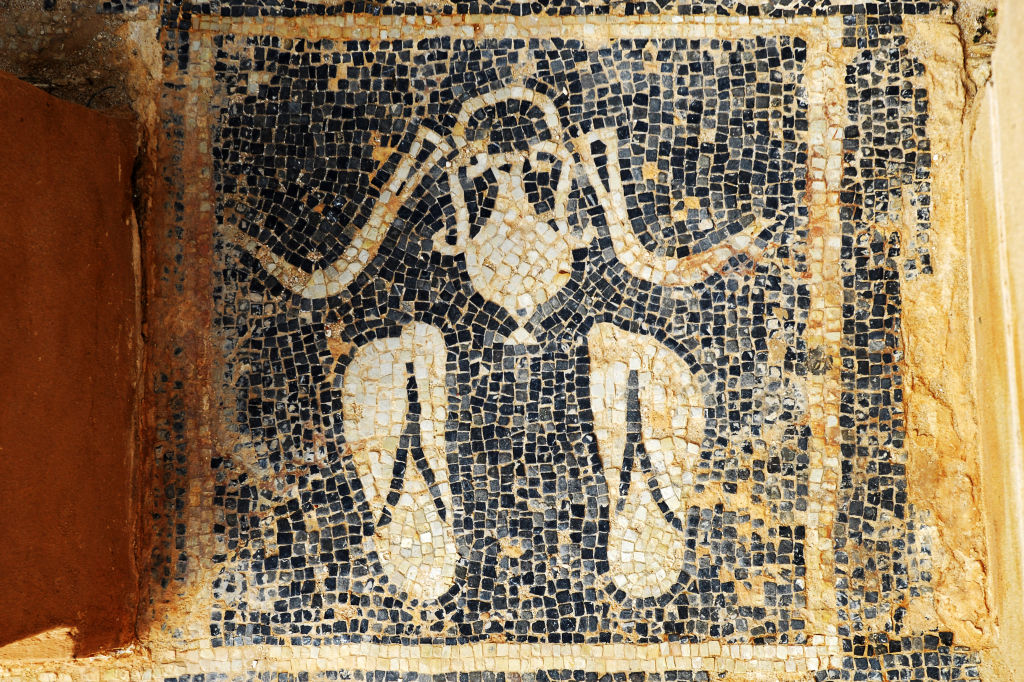For seven decades, archaeologists at the Villa Romana del Casale in south-central Sicily have been uncovering mosaics that blur the line between antiquity and modernity: women in bikinis tossing a ball, cupids fishing, and seahorses cloaked in panther skins. Now the site has produced another incongruity—a pair of flip-flops.
The sandals appear in the mosaic-paved frigidarium or cold bath of the villa’s southern baths, alongside the inscription Treptona bibas, thought to reference a woman involved in managing the complex. The find was made during the University of Bologna’s Summer School ArchLABS program, which trains students from 11 countries in modern excavation techniques.
Related Articles

Flip-flop motifs, it turns out, were fashionable in Late Roman bath decoration. Known examples have been found across Spain, Cyrenaica, Cyprus, Jordan, and Asia Minor. Program director Isabella Baldini said that the motif signals the baths’ aristocratic and cosmopolitan character—one of several markers of the villa’s social life.
The Romans, of course, wore their own versions of sandals: the heavy, hobnailed caligae of the legionary or the lighter soleae preferred by civilians. Today’s rubber beach footwear descends instead from Japanese zōri sandals, later reworked in Brazil.
The Sicilian villa itself—37,000 square feet of mosaics spread over three terraces—offers a lavish picture of elite life in the 3rd and 4th centuries. Athletic contests decorate the gym, cupids harvest grapes in the dining hall, and in the celebrated Great Hunt mosaic, animals are trapped and shipped abroad—perhaps for games organized by the villa’s owner, who may have been a high-ranking official with North African ties.
Protected for centuries by a Medieval landslide, the villa was systematically excavated only in the 1950s under Gino Vinicio Gentili and designated a UNESCO World Heritage site in 1997. Yet, despite its fame, archaeologists caution that much work remains: digital modeling, geophysical surveys, and archival study are still needed to piece together the villa’s original layout.
For all its glamour, the site is also fragile. Italian heritage groups have recently warned of neglect and underfunding—an irony, given that the mosaics themselves once celebrated the wealth and reach of Rome’s elite.

